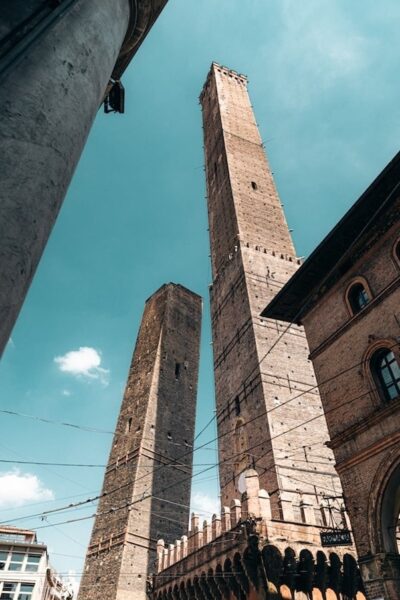
I have often wondered, and I’m sure that you have too, what the Pisan tourist trade would have been like if its cathedral bell tower had not begun leaning from the early years of its construction in the 12th century and continued to do so ever since. The 56-metre-high tower, after stabilisation efforts at the turn of the century, is 3.97 degrees off the vertical, a tilt that has attracted millions of tourists for hundreds of years — and spawned an industry of kitsch miniature facsimiles.
But did you know that in another famous Italian city there’s another ancient tower that leans even more? (Well, just a little bit more: it’s 4 degrees off the vertical, compared with Pisa’s 3.97.)
Now the 48-metre high Garisenda tower, in the centre of Bologna, is showing ‘worrying oscillations’ in the sensors that monitor its movements. The Garisenda, and its towering neighbour, the Asinelli (a whopping 97 metres high), are among are among Bologna’s most recognisable sights, though less unsung than Pisa’s torre pendulata.
The Garisenda’s foundations, of mortar, terracotta bricks and river stones, have been notoriously unstable since the tower was constructed in the early 12th century. Way back in 1300, tower was shortened by 10 metres because of fears it would collapse. The University of Bologna has been keeping a scientific eye on it for many years now, and in 2019 the Garisenda was constrained by steel bands, but they don’t seem to have solved the problem.
The national government blames the city council for not taking timely action and says it will fund further stiabilisation work, but it’s likely to cost at least €5 million to ensure it doesn’t become a mound of rubble.
